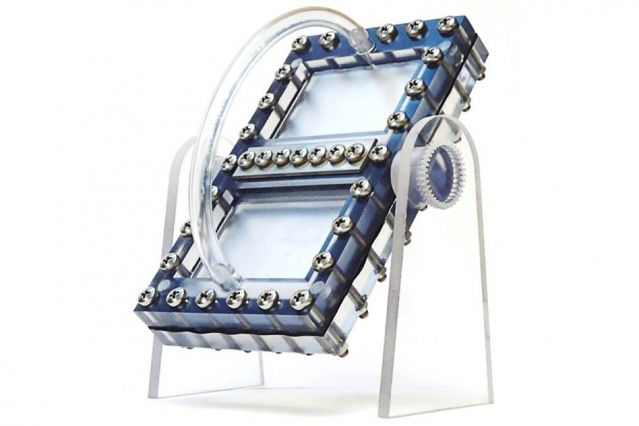There is a multitude of different battery technology available nowadays. Previously we have read about ‘AGDIB: New Battery Technology by Chinese Researchers‘, which was a solution over lithium-ion battery (LIB) problems. It supplies energy density similar to 150 Whkg-1 at a power density of similar to 1200 Whkkg-1, which is 50% higher than profitable lithium-ion batteries.
Later on, we also learned about ‘Never ending Nanowire-based batteries‘, where we come to know about its mind-blowing features for storing and transmitting electricity. They are extremely conductive. In size, it is thousand times thinner than a human hair.
Here, one more new approach to the battery technology has been added. MIT researchers have developed (invented) a whole new concept that turns battery technology upside down. They give it a name as liquid flow batteries.
Although, this is not a new concept. Before three years ago, some researchers unveiled a similar concept. That basic technology could use different chemical formulations, It include same chemical compounds found in today’s lithium- ion batteries. In this case, basic components are not a chunk of a solid object, which being left in place for the life of the battery, but rather tiny particles that can be carried along in a liquid slurry. Bigger container/tanks are essential for increasing storage capacity to hold the slurry.
Previous liquid batteries depend on complex systems of tanks, plugs, and pumps. It also was expensive in cost and supplies lots of chances for possible leaks and failures.
This new version of liquid batteries replaces a simple gravity feed from the pump system. It also throws out that complexity of pump system. Directly by changing the angle of the device, the rate of energy production can be adjusted. It causes boosting or slowing down the rate of flow.
According to Kyocera Professor of Ceramics Yet-Ming Chiang, “This new approach as something like a “concept car”, a design that is not expected to go into production as it is but that establishes some new ideas that can ultimately lead to a real product.”
The real concept for flow batteries demonstrated in 1970’s. Those previous versions of materials had very long energy density. In proportion to their weight, they had the very low capacity for storing energy. After that new concept came in the development of flow batteries before few years ago. It came with the introduction of high energy density versions. That version of batteries had various advantages. But if we compare it with other flow batteries, they had a major drawback of complexity in its plumbing systems.
This new approach overcomes that drawback of plumbing with a very simple gravity fed system. It has functions like an old hourglass or egg timer. Its particles flow through a narrow a narrow opening from one tank to another. By turning the device over, the flow can be reversed. It looks like a rectangular window frame in shape with narrow opening the place where two bands would meet in the middle.
The team built only one of the two sides of the battery. The first side is composed of flowing liquid, whereas another side consists of a sheet of lithium in solid form. Before making their ultimate goal, the team first decided to evaluate the concept in a simpler form. This new version has both positive and negative electrodes. Both are liquid and flow side by side through an opening. The opening is separated by a membrane.
Depending on their specific applications, both solid and liquid batteries have advantages.
Chiang said, “The concept here shows that you don’t need to be confined by these two extremes. This is an example of hybrid devices that fall somewhere in the middle.”
He then continued, “The trickiest part of the design process was controlling characteristics of the liquid slurry to control the flow rates. The thick liquid was behaving a bit like Ketchup in the bottle. It’s hard to get it flowing in the first place, but hen once it starts, the flow can be too sudden. For getting the right flow, it required a long process of fine tuning both the liquid mixture and the design of the mechanical structures.”
Some key features of this new concept of battery technology:
- This new design is simpler and more compact battery systems.
- It is inexpensive and modular.
- Allows for gradual expansion of grid-connected storage systems to meet growing demand.
- Components are simple enough that they could be made through injection molding or even 3D-printing.
- For this new liquid battery, the power density is determined by the size of the attack.
- Energy density is determined by the size of its storage tanks.
